5-Fluorpyridin-2-ol
Modify Date: 2025-08-26 18:41:37
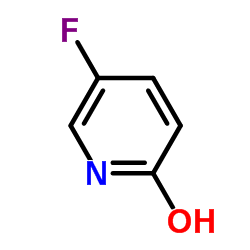
5-Fluorpyridin-2-ol structure
|
Common Name | 5-Fluorpyridin-2-ol | ||
|---|---|---|---|---|
| CAS Number | 51173-05-8 | Molecular Weight | 113.090 | |
| Density | 1.3±0.1 g/cm3 | Boiling Point | 292.8±20.0 °C at 760 mmHg | |
| Molecular Formula | C5H4FNO | Melting Point | N/A | |
| MSDS | Chinese USA | Flash Point | 130.9±21.8 °C | |
| Symbol |


GHS05, GHS07 |
Signal Word | Danger | |
| Name | 5-Fluoro-2-hydroxypyridine |
|---|---|
| Synonym | More Synonyms |
| Density | 1.3±0.1 g/cm3 |
|---|---|
| Boiling Point | 292.8±20.0 °C at 760 mmHg |
| Molecular Formula | C5H4FNO |
| Molecular Weight | 113.090 |
| Flash Point | 130.9±21.8 °C |
| Exact Mass | 113.027695 |
| PSA | 33.12000 |
| LogP | -0.37 |
| Vapour Pressure | 0.0±0.6 mmHg at 25°C |
| Index of Refraction | 1.527 |
| InChIKey | KLULSYPVWLJZAO-UHFFFAOYSA-N |
| SMILES | O=c1ccc(F)c[nH]1 |
|
SECTION 1: Identification of the substance/mixture and of the company/undertaking Product identifiers Product name: 5-Fluoro-2-hydroxypyridine REACH No.: A registration number is not available for this substance as the substance or its uses are exempted from registration, the annual tonnage does not require a registration or the registration is envisaged for a later registration deadline.
CAS-No.: 51173-05-8 Relevant identified uses of the substance or mixture and uses advised against Identified uses: Laboratory chemicals, Manufacture of substances SECTION 2: Hazards identification Classification of the substance or mixture Classification according to Regulation (EC) No 1272/2008 Acute toxicity, Oral (Category 4), H302 Skin irritation (Category 2), H315 Serious eye damage (Category 1), H318 Specific target organ toxicity - single exposure (Category 3), H335 For the full text of the H-Statements mentioned in this Section, see Section 16. Classification according to EU Directives 67/548/EEC or 1999/45/EC Xn HarmfulR22, R37/38, R41 For the full text of the R-phrases mentioned in this Section, see Section 16. Label elements Labelling according Regulation (EC) No 1272/2008 Pictogram Signal wordDanger Hazard statement(s) H302Harmful if swallowed. H315Causes skin irritation. H318Causes serious eye damage. H335May cause respiratory irritation. Precautionary statement(s) P261Avoid breathing dust. P280Wear protective gloves/ eye protection/ face protection. P305 + P351 + P338IF IN EYES: Rinse cautiously with water for several minutes. Remove contact lenses, if present and easy to do. Continue rinsing. Supplemental Hazardnone Statements Other hazards - none SECTION 3: Composition/information on ingredients Substances Synonyms: 5-Fluoro-2-pyridinol Formula: C5H4FNO Molecular Weight: 113,09 g/mol CAS-No.: 51173-05-8 Hazardous ingredients according to Regulation (EC) No 1272/2008 ComponentClassificationConcentration 5-Fluoro-2-hydroxypyridine Acute Tox. 4; Skin Irrit. 2; Eye- Dam. 1; STOT SE 3; H302, H315, H318, H335 Hazardous ingredients according to Directive 1999/45/EC ComponentClassificationConcentration 5-Fluoro-2-hydroxypyridine Xn, R22 - R37/38 - R41- For the full text of the H-Statements and R-Phrases mentioned in this Section, see Section 16 SECTION 4: First aid measures Description of first aid measures no data available Most important symptoms and effects, both acute and delayed The most important known symptoms and effects are described in the labelling (see section 2.2) and/or in section 11 Indication of any immediate medical attention and special treatment needed no data available SECTION 5: Firefighting measures Extinguishing media no data available Special hazards arising from the substance or mixture Carbon oxides, nitrogen oxides (NOx), Hydrogen fluoride Advice for firefighters no data available Further information no data available SECTION 6: Accidental release measures Personal precautions, protective equipment and emergency procedures For personal protection see section 8. Environmental precautions no data available Methods and materials for containment and cleaning up no data available Reference to other sections For disposal see section 13. SECTION 7: Handling and storage Precautions for safe handling For precautions see section 2.2. Conditions for safe storage, including any incompatibilities no data available Specific end use(s) A part from the uses mentioned in section 1.2 no other specific uses are stipulated SECTION 8: Exposure controls/personal protection Control parameters Components with workplace control parameters Exposure controls no data available SECTION 9: Physical and chemical properties Information on basic physical and chemical properties a) AppearanceForm: solid b) Odourno data available c) Odour Thresholdno data available d) pHno data available e) Melting point/freezingMelting point/range: 150 - 155 °C point f) Initial boiling point and no data available boiling range g) Flash pointno data available h) Evapouration rateno data available i) Flammability (solid, gas) no data available j) Upper/lowerno data available flammability or explosive limits k) Vapour pressureno data available l) Vapour densityno data available m) Relative densityno data available n) Water solubilityno data available o) Partition coefficient: n- log Pow: 1,005 octanol/water p) Auto-ignitionno data available temperature q) Decompositionno data available temperature r) Viscosityno data available s) Explosive propertiesno data available t) Oxidizing propertiesno data available Other safety information no data available SECTION 10: Stability and reactivity Reactivity no data available Chemical stability no data available Possibility of hazardous reactions no data available Conditions to avoid no data available Incompatible materials Strong oxidizing agents Hazardous decomposition products Other decomposition products - no data available In the event of fire: see section 5 SECTION 11: Toxicological information Information on toxicological effects Acute toxicity no data available Skin corrosion/irritation no data available Serious eye damage/eye irritation no data available Respiratory or skin sensitisation no data available Germ cell mutagenicity no data available Carcinogenicity IARC:No component of this product present at levels greater than or equal to 0.1% is identified as probable, possible or confirmed human carcinogen by IARC. Reproductive toxicity no data available Specific target organ toxicity - single exposure Inhalation - May cause respiratory irritation. Specific target organ toxicity - repeated exposure no data available Aspiration hazard no data available Additional Information RTECS: Not available To the best of our knowledge, the chemical, physical, and toxicological properties have not been thoroughly investigated. SECTION 12: Ecological information Toxicity no data available Persistence and degradability no data available Bioaccumulative potential no data available Mobility in soil no data available Results of PBT and vPvB assessment PBT/vPvB assessment not available as chemical safety assessment not required/not conducted Other adverse effects no data available SECTION 13: Disposal considerations Waste treatment methods no data available SECTION 14: Transport information UN number ADR/RID: -IMDG: -IATA: - UN proper shipping name ADR/RID: Not dangerous goods IMDG: Not dangerous goods IATA:Not dangerous goods Transport hazard class(es) ADR/RID: -IMDG: -IATA: - Packaging group ADR/RID: -IMDG: -IATA: - Environmental hazards ADR/RID: noIMDG Marine pollutant: noIATA: no Special precautions for user no data available SECTION 15: Regulatory information This safety datasheet complies with the requirements of Regulation (EC) No. 1907/2006. Safety, health and environmental regulations/legislation specific for the substance or mixture no data available Chemical Safety Assessment For this product a chemical safety assessment was not carried out SECTION 16: Other information Full text of H-Statements referred to under sections 2 and 3. Acute Tox.Acute toxicity Eye Dam.Serious eye damage H302Harmful if swallowed. H315Causes skin irritation. H318Causes serious eye damage. H335May cause respiratory irritation. Skin Irrit.Skin irritation STOT SESpecific target organ toxicity - single exposure Full text of R-phrases referred to under sections 2 and 3 XnHarmful R22Harmful if swallowed. R37/38Irritating to respiratory system and skin. R41Risk of serious damage to eyes. |
| Symbol |


GHS05, GHS07 |
|---|---|
| Signal Word | Danger |
| Hazard Statements | H302-H315-H318-H335 |
| Precautionary Statements | P261-P280-P305 + P351 + P338 |
| Hazard Codes | Xn |
| Risk Phrases | 22-37/38-41 |
| Safety Phrases | 26-39 |
| RIDADR | NONH for all modes of transport |
| HS Code | 2933399090 |
|
~49% 
5-Fluorpyridin-2-ol CAS#:51173-05-8 |
| Literature: Ueda, Yasutsugu; Connolly, Timothy P.; Kadow, John F.; Meanwell, Nicholas A.; Wang, Tao; Chen, Chung-Pin H.; Yeung, Kap-Sun; Zhang, Zhongxing; Leahy, David Kenneth; Pack, Shawn K.; Soundararajan, Nachimuthu; Sirard, Pierre; Levesque, Kathia; Thoraval, Dominique Patent: US2005/209246 A1, 2005 ; Location in patent: Page/Page column 30; 31 ; |
|
~% 
5-Fluorpyridin-2-ol CAS#:51173-05-8 |
| Literature: Regueiro-Ren, Alicia; Xue, Qiufen M.; Swidorski, Jacob J.; Gong, Yi-Fei; Mathew, Marina; Parker, Dawn D.; Yang, Zheng; Eggers, Betsy; D'Arienzo, Celia; Sun, Yongnian; Malinowski, Jacek; Gao, Qi; Wu, Dedong; Langley, David R.; Colonno, Richard J.; Chien, Caly; Grasela, Dennis M.; Zheng, Ming; Lin, Pin-Fang; Meanwell, Nicholas A.; Kadow, John F. Journal of Medicinal Chemistry, 2013 , vol. 56, # 4 p. 1656 - 1669 |
| Precursor 2 | |
|---|---|
| DownStream 10 | |
| HS Code | 2933399090 |
|---|---|
| Summary | 2933399090. other compounds containing an unfused pyridine ring (whether or not hydrogenated) in the structure. VAT:17.0%. Tax rebate rate:13.0%. . MFN tariff:6.5%. General tariff:20.0% |
| 5-fluoro-1H-pyridin-2-one |
| MFCD03092918 |
| 5-Fluoropyridin-2-ol |
| 5-Fluorpyridin-2-ol |
| 2-Hydroxy-5-fluoropyridine |
| 5-Fluoro-2-pyridinol |
| 5-Fluoro-2-hydroxypyridine |
| 5-Fluoropyridin-2(1H)-one |
| 2(1H)-Pyridinone, 5-fluoro- |
| 5-Fluoro-2(1H)-pyridinone |
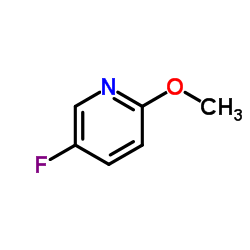
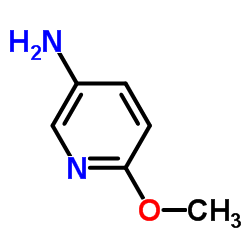
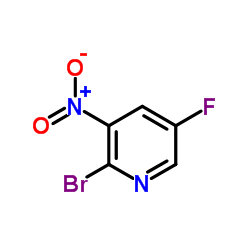 CAS#:652160-72-0
CAS#:652160-72-0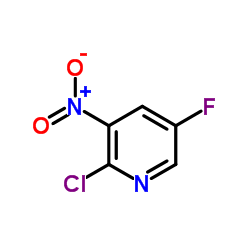 CAS#:136888-21-6
CAS#:136888-21-6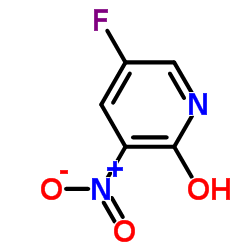 CAS#:136888-20-5
CAS#:136888-20-5 CAS#:1211541-93-3
CAS#:1211541-93-3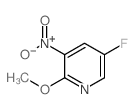 CAS#:1211534-27-8
CAS#:1211534-27-8![6-Fluoro-1,3-dihydro-pyrrolo[3,2-b]pyridin-2-one structure](https://image.chemsrc.com/caspic/255/136888-22-7.png) CAS#:136888-22-7
CAS#:136888-22-7 CAS#:917871-47-7
CAS#:917871-47-7![7-Bromo-4-fluoro-1H-pyrrolo[2,3-c]pyridine structure](https://image.chemsrc.com/caspic/297/446284-38-4.png) CAS#:446284-38-4
CAS#:446284-38-4![4-Fluoro-1H-pyrrolo[2,3-c]pyridine-7-carbaldehyde structure](https://image.chemsrc.com/caspic/166/446284-46-4.png) CAS#:446284-46-4
CAS#:446284-46-4![4-Fluoro-1H-pyrrolo[2,3-c]pyridine-7-carboxylic acid structure](https://image.chemsrc.com/caspic/459/446284-56-6.png) CAS#:446284-56-6
CAS#:446284-56-6
